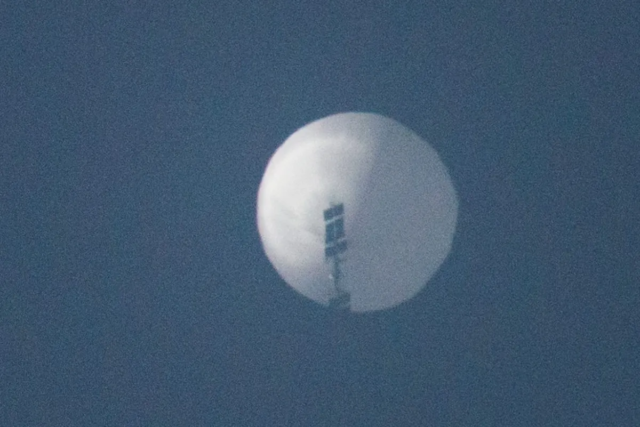On February 2, a high-altitude Chinese balloon assumed to be loaded with sensitive surveillance gear traveled over Alaska, Canada, and the northern United States. It turns out to have been one of several over time – and the Pentagon watched it travel over Montana, home of one the US military’s land-based, nuclear-tipped Minuteman III missile fields.
Are you concerned? The Pentagon is surprisingly sanguine.
The Pentagon has confirmed that the balloon is Chinese, and that China has asked for “calm” about the incident. Pentagon spokesperson Brigadier General Pat Ryder said, “Instances of this activity have been observed over the past several years.… We acted immediately to protect against the collection of sensitive information.”
Three questions:
- If they knew about the balloons, why were they permitted to continue flight?
- What weight does China’s call for “calm” carry with the administration in light of a military violation of our borders?
- What if it wasn’t “surveillance equipment” at all?
The administration wants us to agree that a Chinese intrusion into US airspace is not a big deal. And a high-altitude balloon can, indeed, be used for surveillance. But it can also carry weapons – for example, a nuclear EMP (electromagnetic pulse) weapon intended to create a crisis over an American nuclear site.
The Pentagon made three points of its own. First, that the balloon was operating well above the altitude of commercial aviation, but the incident only became public because it was, in fact, spotted by a passenger on a commercial flight.
Second, the military opposed shooting down the balloon because there might be debris that could injure civilians, but the population density of Montana undermines the point.
Third, the administration had determined that the balloon didn’t give China any additional surveillance capability beyond what it already had through spy satellites orbiting the Earth.
This leaves the EMP question aside. It also leaves aside the possibility that China wasn’t looking for additional surveillance information but was checking out how well America’s continental air defenses actually work. The answer would be, “Not well, apparently.” That is both a military and a strategic comment.
On the military side, the only air defense system the US has deployed in Alaska is the Ground Based Interceptor (GBI). The Pentagon says it was tracking the balloon over Alaska, Canada, and Montana, but how far beyond America’s land border was it first sighted? Could it have been destroyed over the Pacific before it transited Alaska?
America’s newest fighter, the F-35 has a service ceiling of only 50,000 feet (15,240 meters) so it probably would have no chance against the Chinese balloon perhaps operating at 75,000 feet (22,860 meters).
But either the F-22 or the F-15 could potentially have been used to intercept it, depending on its operational altitude. The service ceiling of both planes is approximately 65,000 feet (19,810 meters). Firing at an upward angle an air launched missile might have been able to hit the intruder. An intercept is not a sure thing, but nothing is.
A US AEGIS warship in the Pacific, equipped with interceptor missiles, might also have taken out the balloon, but whether any AEGIS cruiser was in the right place at the right time isn’t known.
On the political side, the fact that the US launched no weapons against the balloon suggests two things: first, maybe the GBI system doesn’t work against slow-flying balloons, which would certainly be something China would want to know. Or that the administration made a decision to allow an adversarial and increasingly aggressive country to enter our airspace, which would also be something Beijing might find interesting.
The Pentagon apparently had not planned on having this discussion. The security establishment would have stayed mum had not a passenger on a civilian airliner exposed what is now understood to be one Chinese incursion among others. The Biden administration needs to explain the political rationale for keeping China’s intrusions secret as well as why there was no official American protest.
China has exposed a massive security vulnerability over US territory, and whether that vulnerability is military or political or both, the American people deserve better answers.


